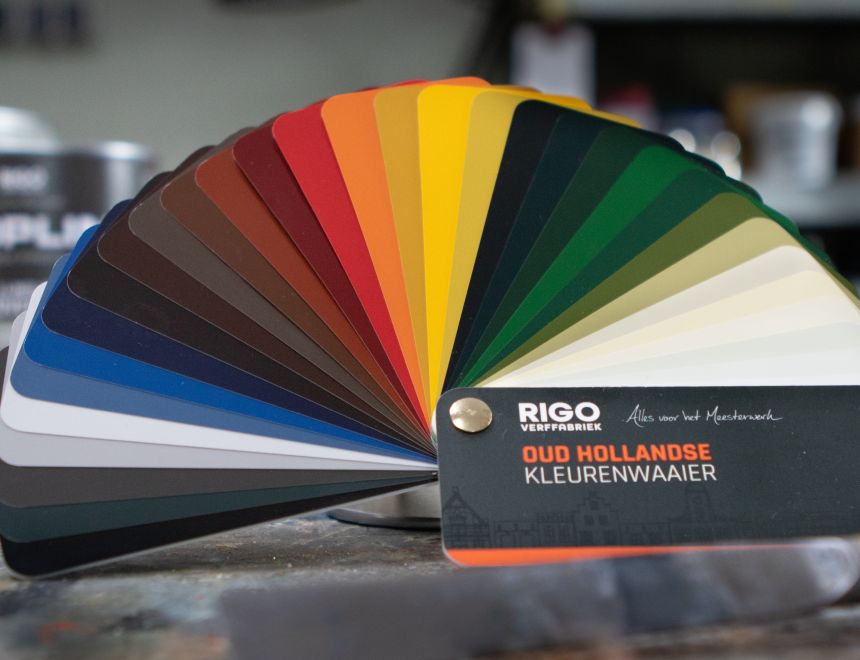Updated Old-Dutch colour chart

Our updated Old-Dutch colour chart has arrived! This chart features the 32 greatest colours from RIGO colour collections going back as far as 1938. Eighty years of colour history are bundled together in this "new" Old-Dutch colour chart. These classic colours, which go hand in hand with Dutch heritage, have been responsible for the typical, authentic character of Dutch monuments for years.
Linseed Stand Oil Paint is on the rise. This is thanks to its environmentally friendly and sustainable aspects on the one hand, and its unrivalled technical properties on the other. There is a good reason why we still find intact, centuries-old coats of linseed oil paint in monumental buildings. For monuments, linseed oil paint, which has proven itself as wood protection for hundreds of years, is simply a must.
Which colours are part of this collection? Of course, the collection includes the classic Herengrachtgroen (Canal Green) and Standwit (Stand White), as well as Oer Rood (Ancient Red) from the Groningen landscape and Camperduin Green from the Schoorl dunes. Even longer ago, Indian Yellow was taken back from the East and used to make a warm, orange paint. And Umber Grey, a dark grey with yellow, umber tones, definitely still has a place in the contemporary streetscape.
True to its name, Canal Green used to be applied to town houses by canals in the city. Green was expensive, as it was made with blue and yellow. Blue pigment was the most expensive pigment there was. The yellow pigment wasn't quite as colourfast and gradually faded from the colour, which meant the paint retained a bluish hue. With a dark green colour like this on your front door, you could show off your wealth and grandeur.
In the 50s of the previous century, much of our youngest heritage in the Flevopolder was painted in pale browns: cheaper colours that suited a time of scarcity and reconstruction.
This colour chart is an ode to the artisanal paintwork of the painters and the high quality and sustainability that go hand in hand with this. Of course, the colours on a colour chart are merely an indication of their performance in real life, as the thick, rounded gloss of the TOPLIN Linseed Stand Oil Paint makes the colours even deeper.